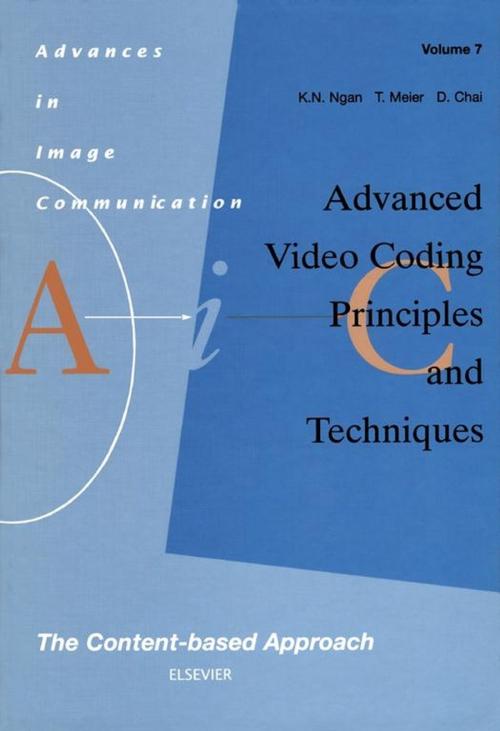Advanced Video Coding: Principles and Techniques
The Content-based Approach
Nonfiction, Computers, Application Software, Multimedia, Science & Nature, Technology, Engineering, General Computing| Author: | K.N. Ngan, T. Meier, D. Chai | ISBN: | 9780080498737 |
| Publisher: | Elsevier Science | Publication: | August 31, 1999 |
| Imprint: | Elsevier Science | Language: | English |
| Author: | K.N. Ngan, T. Meier, D. Chai |
| ISBN: | 9780080498737 |
| Publisher: | Elsevier Science |
| Publication: | August 31, 1999 |
| Imprint: | Elsevier Science |
| Language: | English |
In recent years, the paradigm of video coding has shifted from that of a frame-based approach to a content-based approach, particularly with the finalization of the ISO multimedia coding standard, MPEG-4. MPEG-4 is the emerging standard for the coding of multimedia content. It defines a syntax for a set of content-based functionalities, namely, content-based interactivity, compression and universal access. However, it does not specify how the video content is to be generated. To generate the video content, video has to be segmented into video objects and tracked as they transverse across the video frames. This book addresses the difficult problem of video segmentation, and the extraction and tracking of video object planes as defined in MPEG-4. It then focuses on the specific issue of face segmentation and coding as applied to videoconferencing in order to improve the quality of videoconferencing images especially in the facial region.
Modal-based coding is a content-based coding technique used to code synthetic objects that have become an important part of video content. It results in extremely low bit rates because only the parameters needed to represent the modal are transmitted. Model-based coding is included to provide background information for the synthetic object coding in MPEG-4. Lastly, MPEG-4, the first coding standard for multimedia content is described in detail. The topics covered include the coding of audio objects, the coding of natural and synthetic video objects, and error resilience.
Advanced Video Coding is one of the first books on content-based coding and MPEG-4 coding standard. It serves as an excellent information source and reference for both researchers and practicing engineers.
In recent years, the paradigm of video coding has shifted from that of a frame-based approach to a content-based approach, particularly with the finalization of the ISO multimedia coding standard, MPEG-4. MPEG-4 is the emerging standard for the coding of multimedia content. It defines a syntax for a set of content-based functionalities, namely, content-based interactivity, compression and universal access. However, it does not specify how the video content is to be generated. To generate the video content, video has to be segmented into video objects and tracked as they transverse across the video frames. This book addresses the difficult problem of video segmentation, and the extraction and tracking of video object planes as defined in MPEG-4. It then focuses on the specific issue of face segmentation and coding as applied to videoconferencing in order to improve the quality of videoconferencing images especially in the facial region.
Modal-based coding is a content-based coding technique used to code synthetic objects that have become an important part of video content. It results in extremely low bit rates because only the parameters needed to represent the modal are transmitted. Model-based coding is included to provide background information for the synthetic object coding in MPEG-4. Lastly, MPEG-4, the first coding standard for multimedia content is described in detail. The topics covered include the coding of audio objects, the coding of natural and synthetic video objects, and error resilience.
Advanced Video Coding is one of the first books on content-based coding and MPEG-4 coding standard. It serves as an excellent information source and reference for both researchers and practicing engineers.















